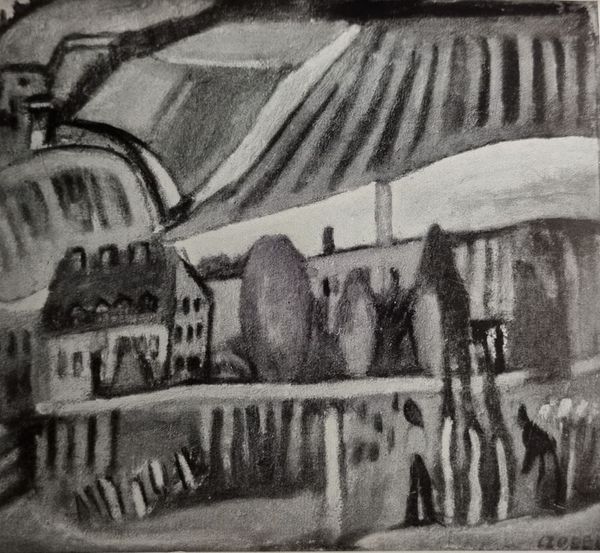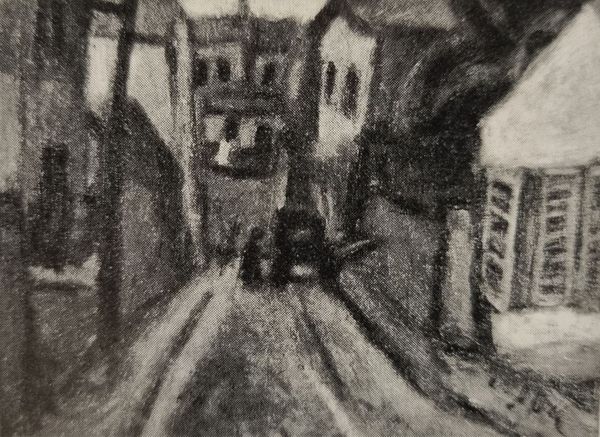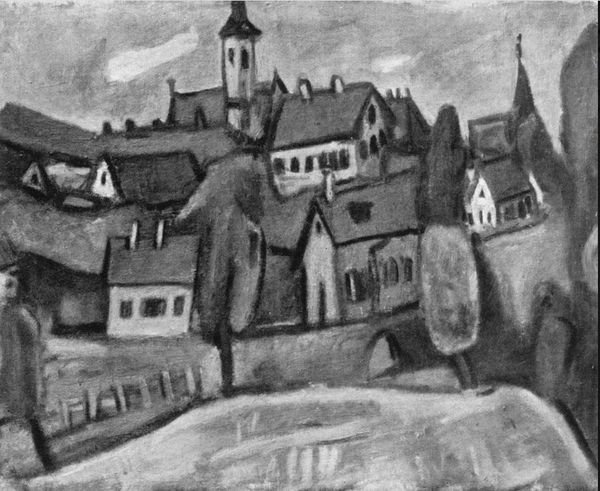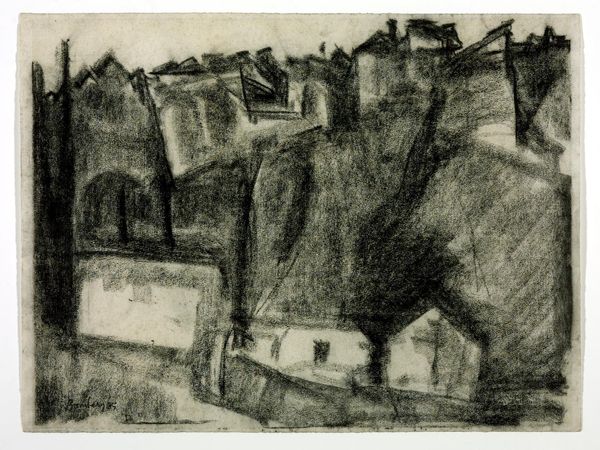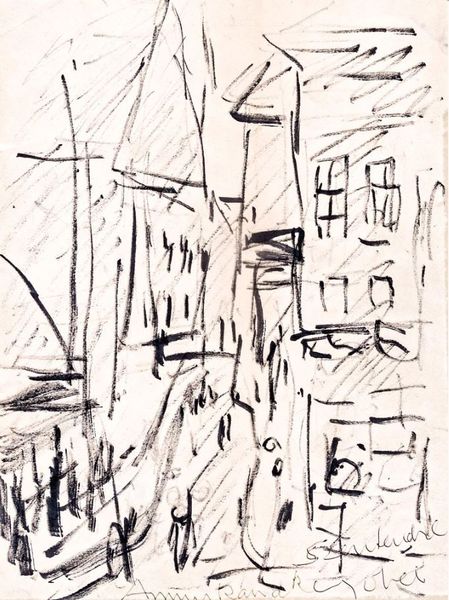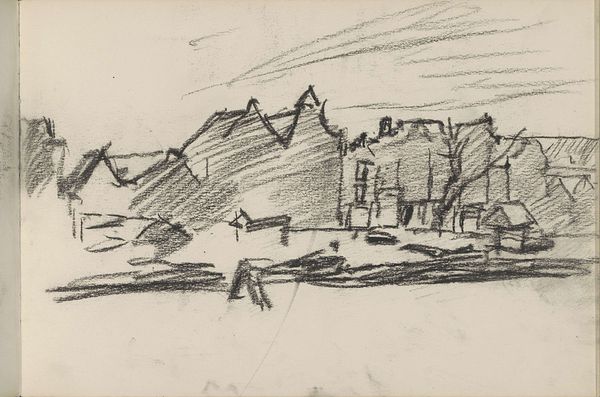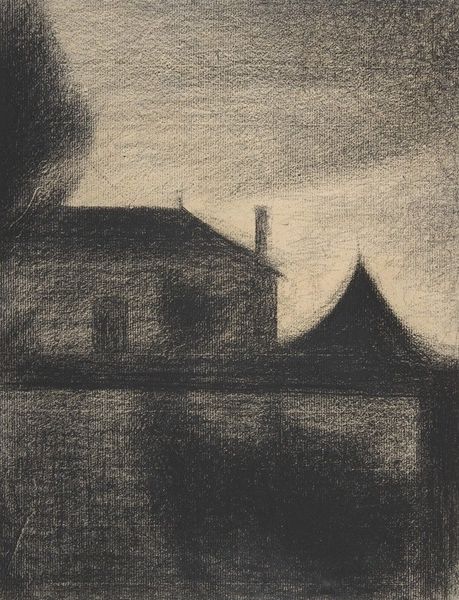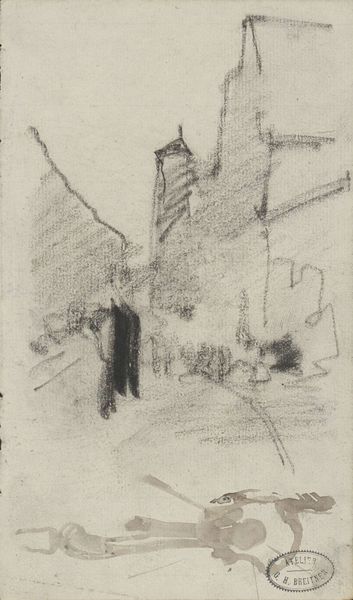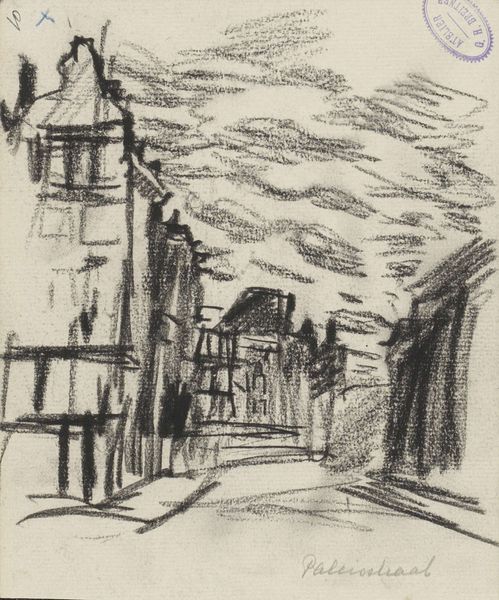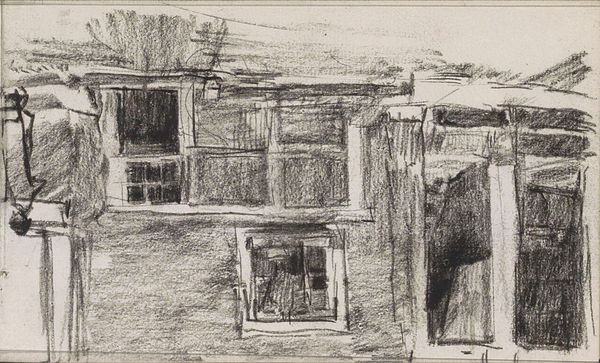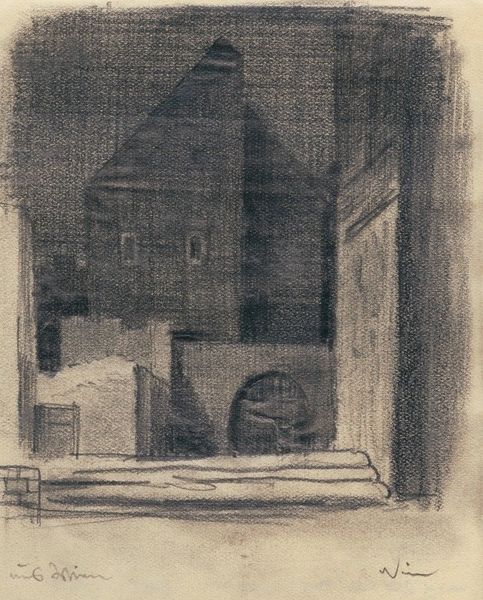
drawing, paper, charcoal
#
drawing
#
landscape
#
charcoal drawing
#
paper
#
charcoal art
#
underpainting
#
expressionism
#
cityscape
#
charcoal
#
charcoal
Copyright: Public domain
Curator: This charcoal drawing is titled “Roofs of Szentendre” created by Vajda Lajos in 1928. What's your initial take? Editor: Ominous! It feels very top-heavy, a dense accumulation of tones pressing down. I wonder, what informed Vajda Lajos’ somber rendering of this city view? Curator: He often explored semi-abstract cityscapes and landscapes. Note the use of charcoal. See how Lajos utilizes a compressed range of tone in creating this unsettling depiction. Observe the underpainting, those layers and compressed perspectives, which lend a kind of anxious tension to the entire picture. Editor: This work emerged during a period of significant artistic and political upheaval in Europe. This work captures something about the mood in Hungary at that time. Perhaps an industrial-era bleakness settling over a once-picturesque town? I would bet it has everything to do with what this industrial revolution does to this country and it is represented in this work through subject and material. Curator: Interesting point. There’s an evident dissonance created through the angles of the roofs. The composition doesn’t aim for the classical ideals of visual harmony, opting for jagged lines and a palpable sense of unrest instead. It could reflect the internal chaos he may have experienced during a turbulent time. The style tends towards Expressionism; that's the main formal component in reading it. Editor: Right, and Szentendre was something of an artist colony during this interwar period, a haven of creativity but equally, a space rife with ideological tension as the country navigated dramatic political change. How did the socio-economic conditions impact artistic communities such as this one? Curator: An economic decline and pervasive sociopolitical frustrations are key to understanding expressionism. By simplifying forms, such as here with this basic reduction of volumes through tone, there is an expressionistic style rooted in a need to move away from realistic representational depiction to express a mood. Editor: I agree, it acts as a reflection and perhaps critique of a changing Hungarian landscape and the impact this has on lived experience and memory. Curator: By deconstructing forms and employing a monochromatic palette, Lajos captures a moment of the Hungarian experience during that time period. Editor: Absolutely, and I think considering this work within that wider context reveals just how profoundly unsettling it is. It speaks to a shared sense of anxiety experienced within Vajda’s social climate.
Comments
No comments
Be the first to comment and join the conversation on the ultimate creative platform.
